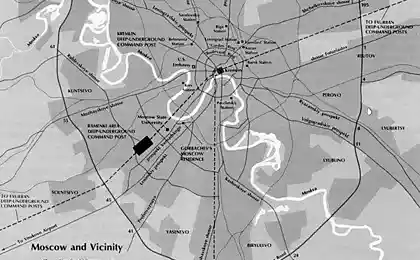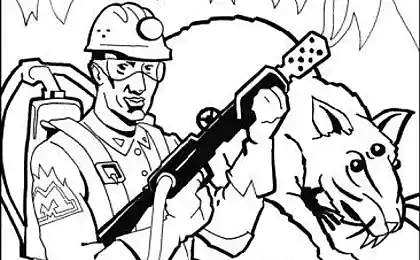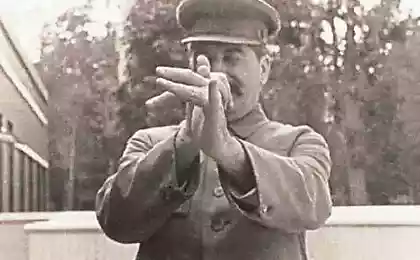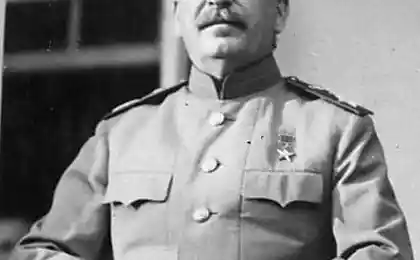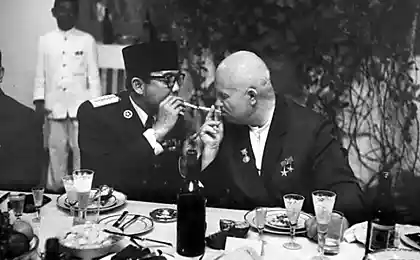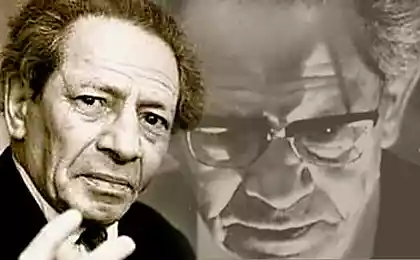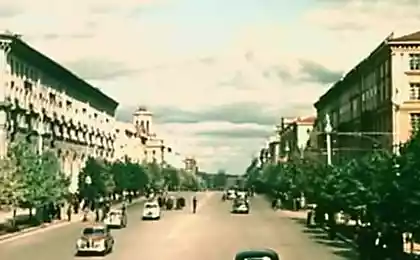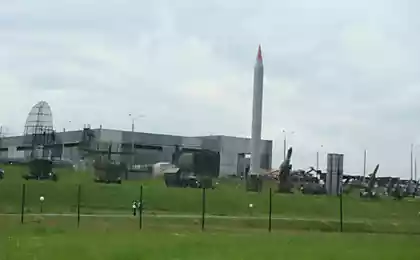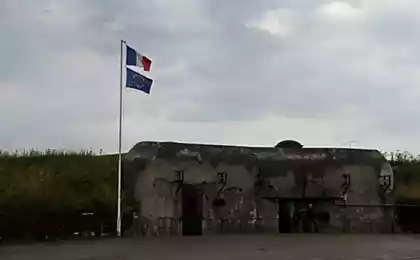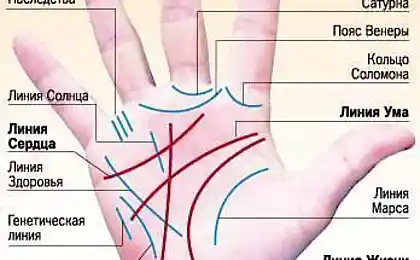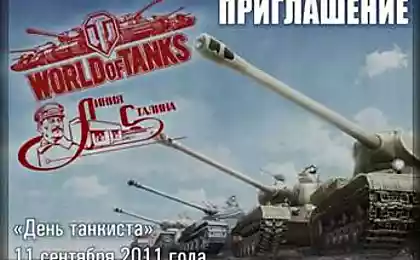1112
Technique "Stalin Line":
73 photo, 1 video, text + 23 photos from the official site.
Historical and Cultural Complex "Stalin Line" - a unique tourist site not only for Belarus. In recent years, here comes more and more tourists and military history enthusiasts from near and far abroad. Visitors are shown the formidable fortifications, allow first hand experience what it's like to shoot from the "Kalashnikov", or ATR. But the main "trick" "Stalin Line" - the tanks. Unlike most other museums, here they are "live" - roaring engines, sneezing soot and knead dirt off-road steel tracks. Just seeing them in motion, feeling the earth trembles, when the multi-ton machine of creeping around, looking into the muzzle of a black hole, you know all the indomitable power, which had to live alongside our grandfathers and great-grandfathers during the long four years of the Great Patriotic. Journalists Onliner.by to the anniversary of victory in World War II talked to the creators of a unique museum, visited in the famous "Thirty", a ride on the T-44, found out what makes each year come here Japanese tourists and why Schwarzenegger did not sell a unique tank BT-7 .
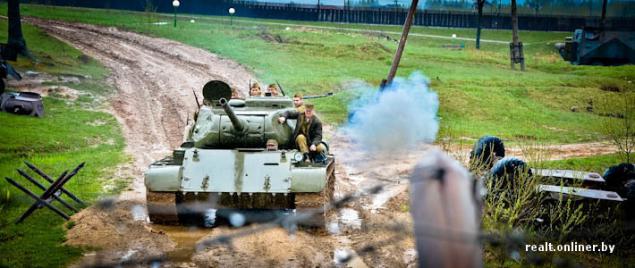
2
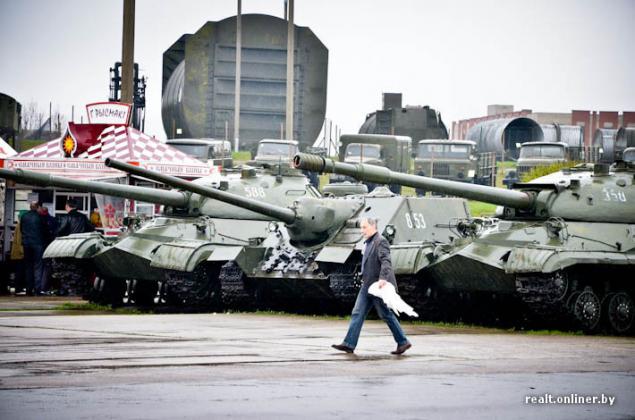
3

4
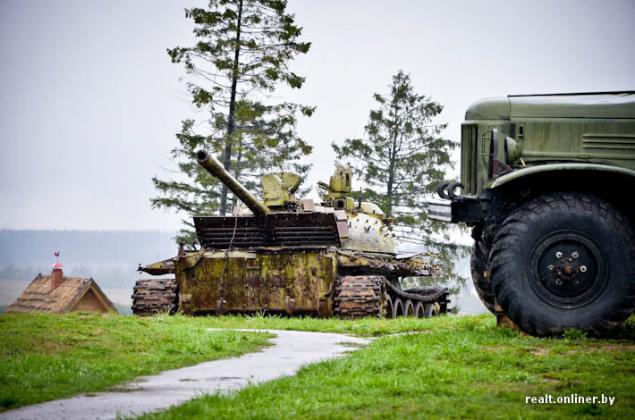
5

6
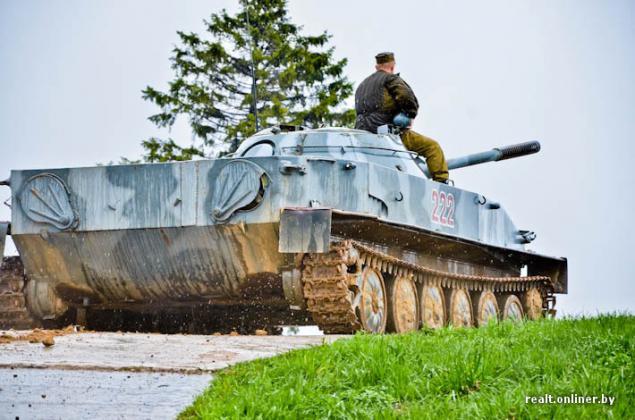
7
Tourists
At the end of the 1920s on the western border of the Soviet Union began the construction of fortifications, with a light hand journalists received the informal name of the line of Stalin. After 70 years, a group of enthusiasts from the charitable foundation "Afghan Memory" with the support of the state, organized on the basis of a small fragment of the fortification historical and cultural complex, which has no analogues in the former USSR.
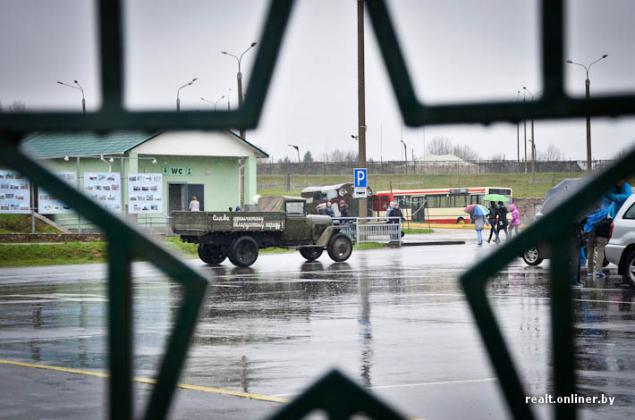
8
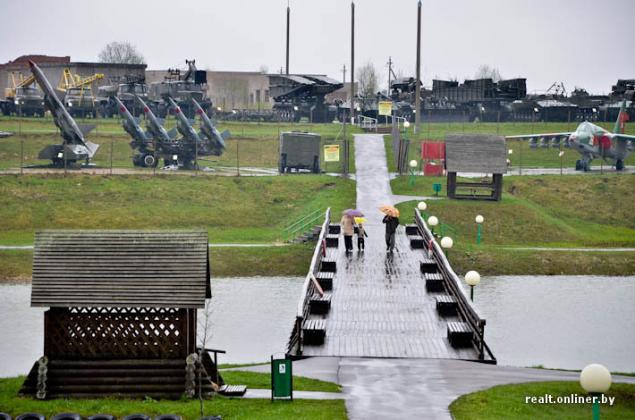
9
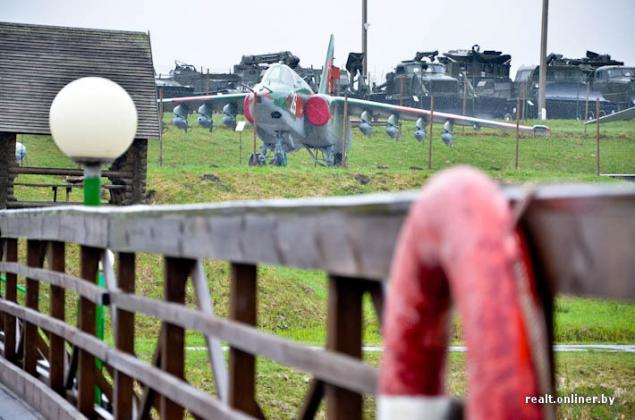
10
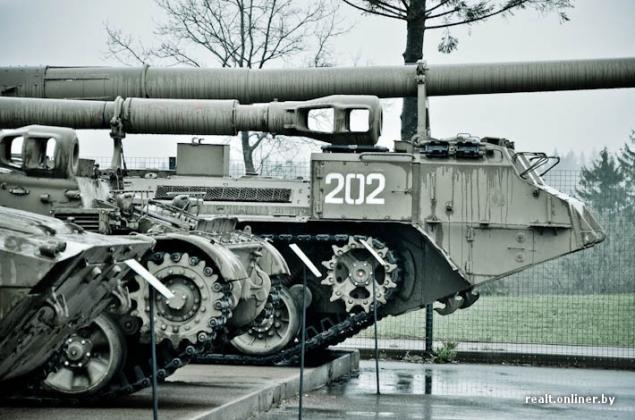
11
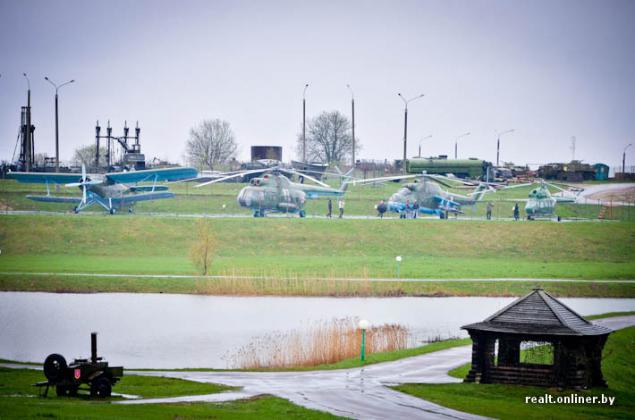
12
Despite the cloudy weather and almost continuous rain, cars and buses with tourists on the "Stalin Line" pull up regularly. Most of the cars in the parking lot - with the Russian numbers: guests from the neighboring countries are trying to use to spend a two-week vacation.
"Everything I like you: people, prices and service - says buys soldier's porridge at a local cafe Muscovite. - Ours is very much come to the majority of people are interested, enthusiastic. Those who do not need anything, just sit at home and drink. "
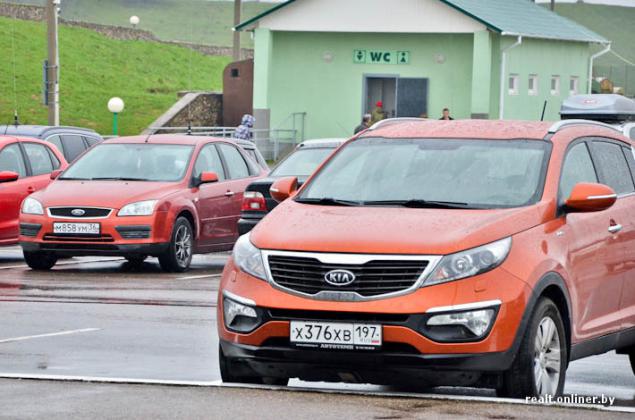
13
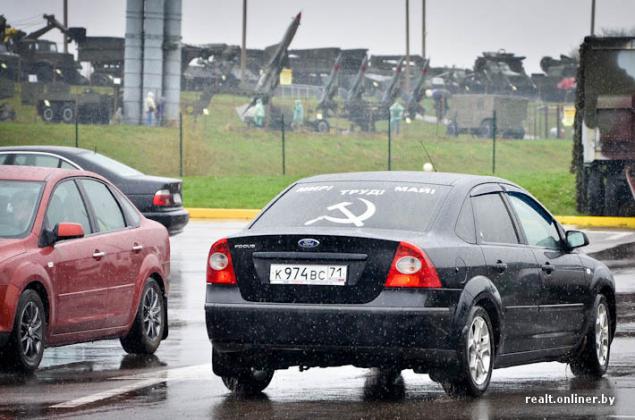
14
Drink often and coming. Another dealer told us the story of Belarusian tourists, who arrived on a tourist bus. "Connoisseur of history" on the road to the "Stalin Line" drunk to unconsciousness, half asleep in his chair, and when the group was leaving, tearfully asked friends to bring him to the nearest tank and take a picture of his background. He said: "My wife does not believe that the tour went on, required evidence!»
Fortunately, such incidents are rare. People who come here are really interested in all that they can show to the historical and cultural complex. Even school children - a headache all the guides - behave in concrete bags caponiers quieter water below the grass and just look in the mouth lecturer. The atmosphere is.

15

16
Fortified
Defensive installations included today in the KIC "Stalin Line", were part of the so-called Miura - Minsk fortified area. All in all the "old" (before 1939), the western border of the Soviet Union since the end of 1920 until the end of 1930 was built 21 fortified area - they covered a great distance from Karelia to Odessa.
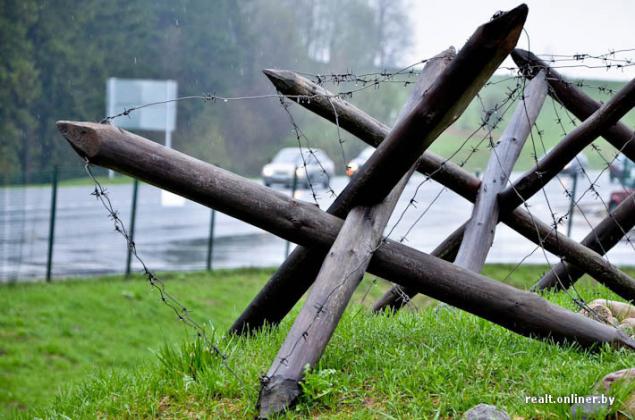
17
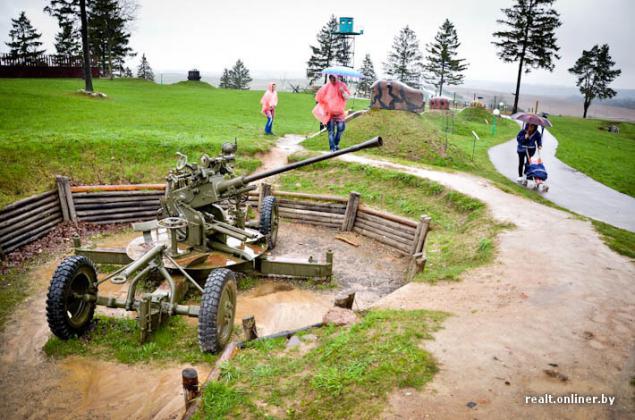
18
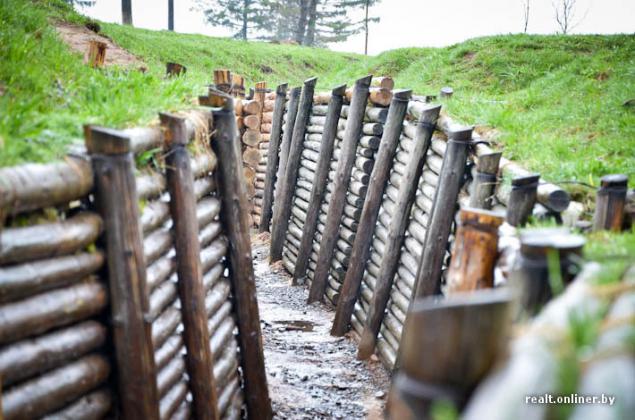
19
- The complex restored and serve as the basic elements of the fortification artillery polukaponir exposure and two machine-gun bunker - says an employee of historical and cultural complex, Sergei Zakharov. - Artillery, or as it is called, gun polukaponir №134, near where we are now, was erected near the modern highway Minsk - Molodechno in 1932. His arms - two 76-millimeter guns. The garrison consisted of the construction of 20 people. Two such caponier crossfire could cover 6-kilometer fortified line of defense.
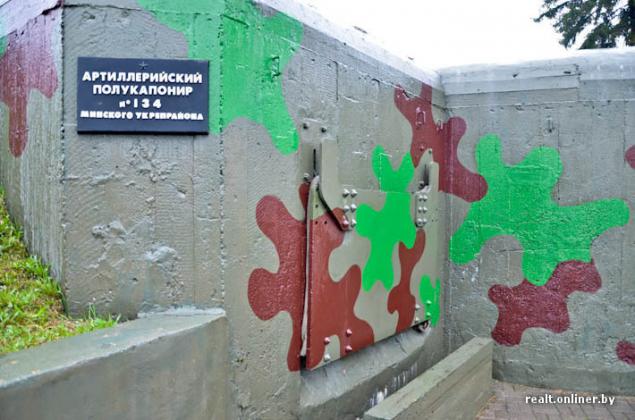
20
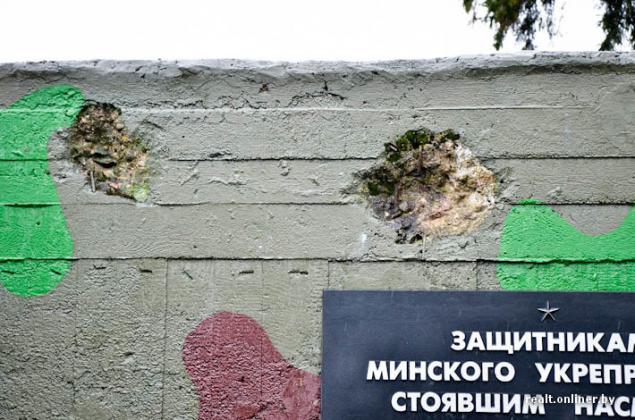
21
- And they say that in itself the line of Stalin any role in the defense of the country did not play, do not understand why it was built - "authoritatively" said one of the tourists.
- This is a traditional misconception - upsets the "know-all" Sergey Zakharov. - Let's start with the fact that Stalin Line was not originally designed to completely stop the enemy advance. Her task was to inflict maximum casualties, the rear cover, to allow to mobilize our army and focus on the threatened area. All have 15 days.
On the other hand, the first fortified areas, we begin to build in 1927, very difficult politically. At this point, we have considered the main enemies of Britain and France, that is the Entente, another intervention which we are constantly frightened. Considered a threat to those countries from bridgeheads in the Baltic States, but more likely the enemy we acted Poland. 1927 - Military coup in Poland, came to power Pilsudski, leaves no hope to restore Rzeczpospolita within the borders of 1772. And just at this moment it begins the accelerated construction of fortified areas.
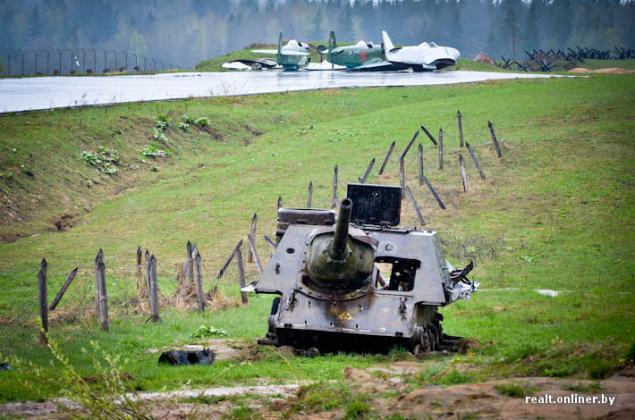
22

23

24
Minsk fortified area, which is part of the line of Stalin, was built in 1932-1933. While the creation of the fortified line of this magnitude hungry undressed country was an enormous feat.
As for the fact that the line of Stalin delayed the Germans, because it is against them never built. It was built against Poland. For example, this one had polukaponir maximum resistance against projectile caliber 203 mm or 152-mm cannon. In Poland until 1938 in service just was not of the caliber of artillery, and so for her, these fortifications were almost invulnerable.
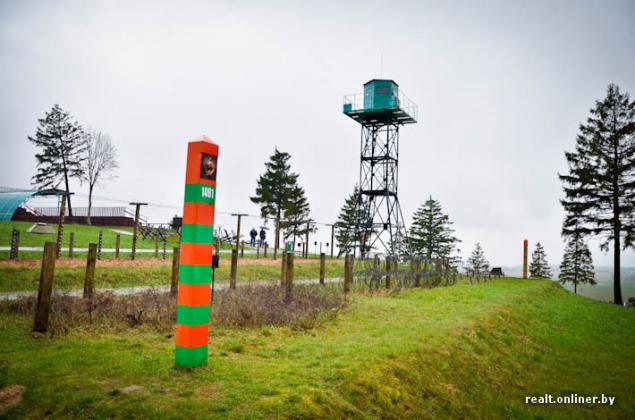
25
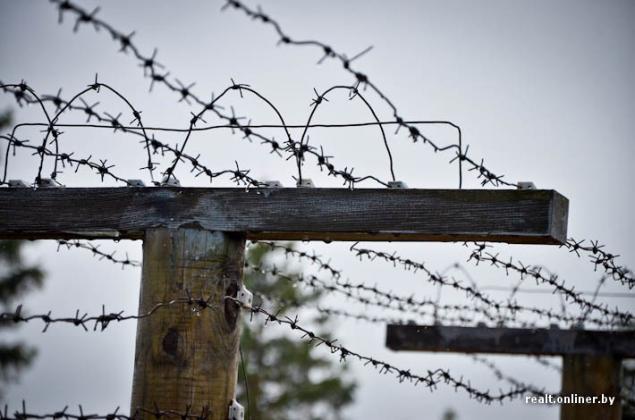
26
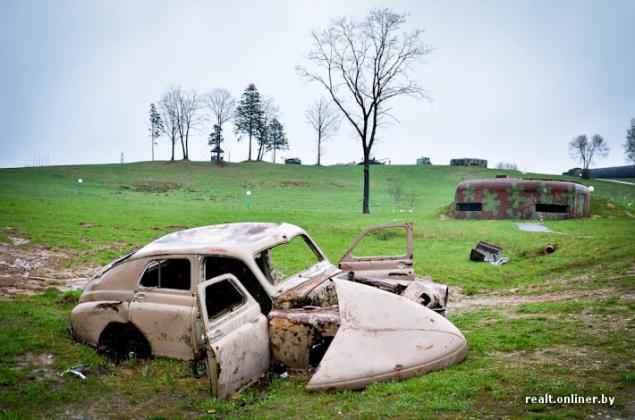
27
Caponier
Sergey Zakharov leads us through the rooms of a concrete bunker. Today it regained almost everything. And virtually all the elements of the fortification - the "native".
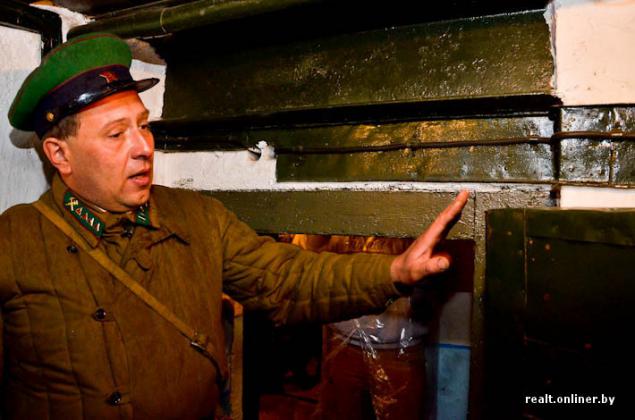
28
- You have to understand that at a time when caponier perform combat missions, space was significantly less here - he says. - Almost everything here was forced by the shelves, boxes of ammunition. The air pressure inside the silo was higher than outside - it allowed the garrison to protect against chemical attack. Also, the pressure "pushes" out the powder gases, or in a few bursts of combat payment instruments would have suffocated.
It was assumed that, unless interrupted by the delivery of ammunition, caponier had to hold at least 15 days. In complete isolation he would have held out for long - would quickly run out of ammunition. Firing guns - 10-12 rounds per minute, 300 rounds of ammunition from enough for a few hours.

29
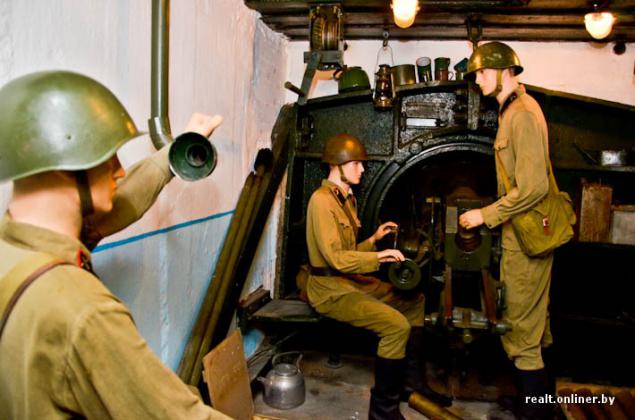
30
Japanese Red Army
Guests from neighboring countries to the "Stalin Line" really excited. They attentive listeners, and clients pay. About the stand, where you can shoot from oholoschennogo weapons, another Russian tourist gatherings buys tickets totaling more than $ 50.
"Shoot shoot well, my son," - he says offspring and pats him on the head. Son readily picks up the PTR and the soul gives a volley of perceived opponents.

31
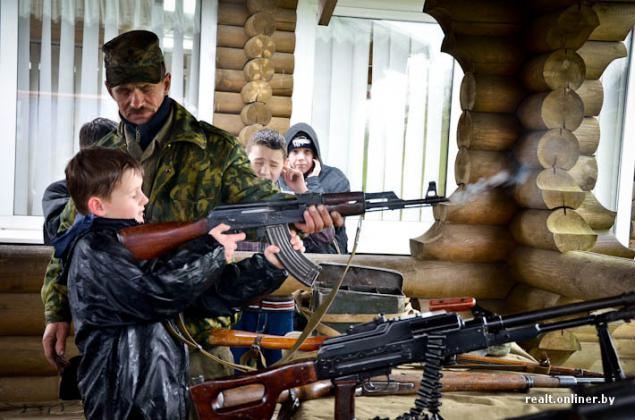
32
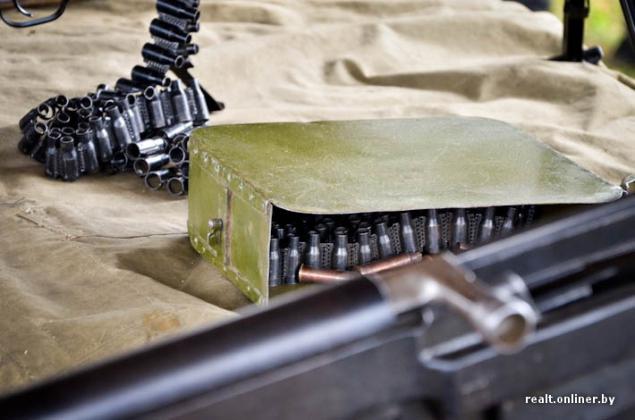
33
In nearby kiosk selling souvenirs. The lead product - plaster busts of the leader of the peoples, whose name is a historical and cultural complex. By the way, officially in honor of Stalin, this line of fortifications never called. This "invention" of journalists and German propaganda even the end of the 1930s, which, nevertheless, firmly established in the public mind. Now, on the "Lines" is a bust of the leader of the peoples (one of the few open to the former Soviet Union after the collapse of the Union), his use of the logo and souvenir production.
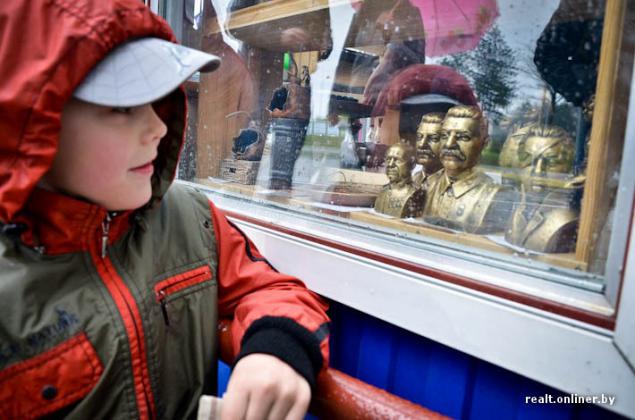
34
Come to the "Stalin Line" and tourists from very very far abroad: Korea and Japan. On this day, the complex is just happy plunged into the life of the Workers 'and Peasants' Red Army, a group of Japanese. They were dressed in Soviet form, after which they began to develop the skills of combat training at the shooting range.
Under the harsh orders of uniformed commander instructor historical and cultural complex Japanese "Red Army" jump on the armor of the T-44 flies with her loose, covering the car and on the spot razyat rifles Mosina imaginary opponent.

35
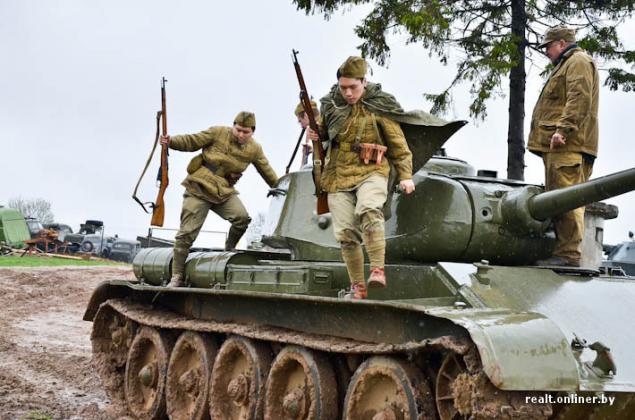
36
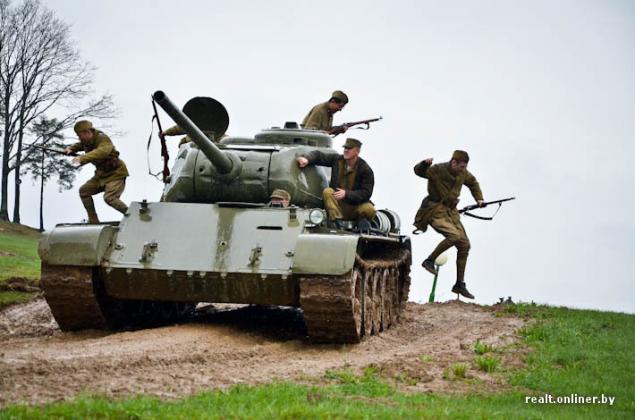
37
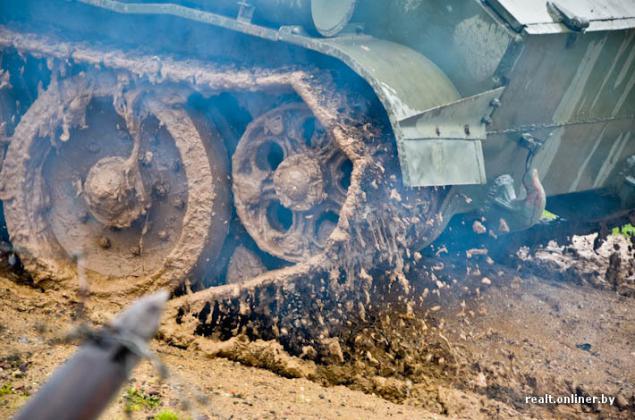
38
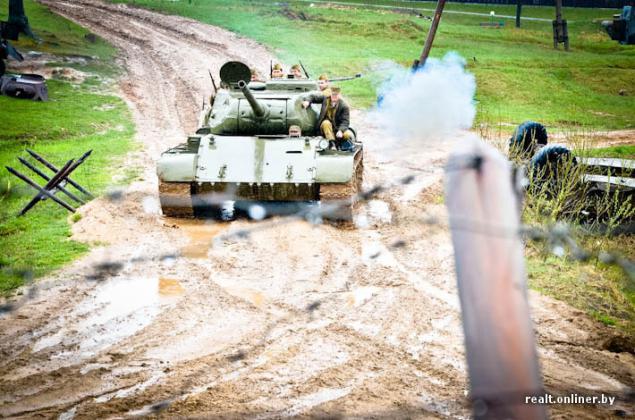
39
Head of the delegation - the businessman from Tokyo Ivahaschi Kabuharu for several years engaged in the export of Russian and Belarusian goods - has long been interested in the history of the Soviet military and tries to promote it at home. He has already made several trips to the "Stalin Line", to the other end of the world, finding unique complex of Belarus closer. At this time, I brought several of his friends to participate in the reconstruction of the historic battles on Khalkhin-in 1939.

40
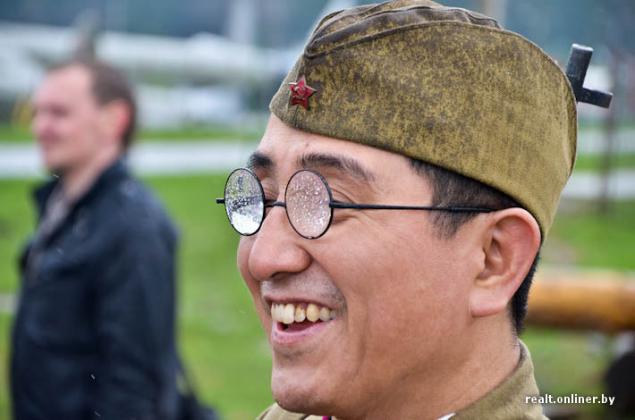
41
Tanks
As already mentioned, the tanks - the main "trick" "Stalin Line". The exhibition of historical and cultural complex of dozens of different from "oldies" from the Second World War to modern weapons. Most is static, but we are interested in "real" machines that "Stalin Line" in recent years, is famous far beyond the country.
On the outskirts of the complex stands out mehdvor "Stalin Line" or, as it is called here, park.
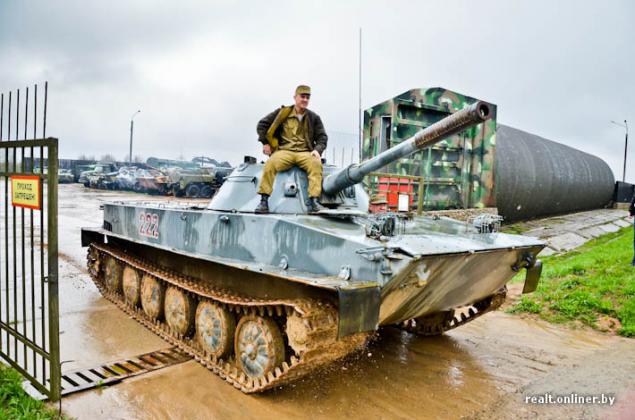
42
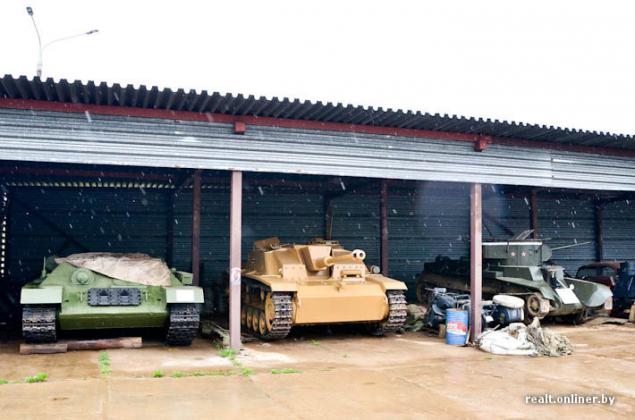
43
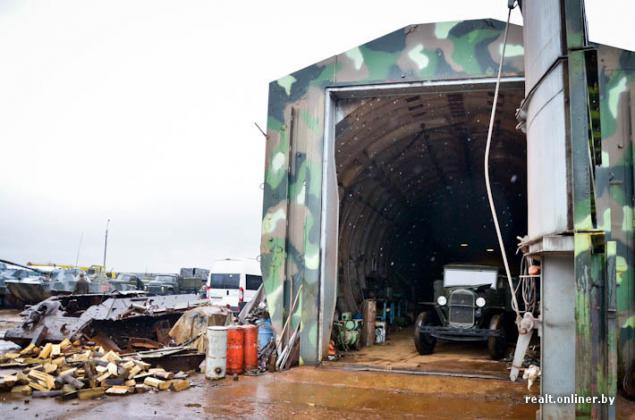
44

45
It suits us strong grandfather, wiping rags stained with fuel oil and represented his hands: Mikhail.

46
At 83, the old tanker Mikhail Onoshko with surprising ease in the high jumps aboard a T-34. Famously pulled headset, dives into the commander's hatch, habitual movement triggers the starter. The machine, like a horse, felt a hand host alive. Mikhail remembers wartime: while still a teenager, he saw marinated powder and fuel oil military mechanics repaired his "wards". Perhaps, from this time and was born a passion for combat vehicles. For more than half a century, he is nursed with tanks. He goes in them as well as teaching, consulting engineers, if they find it difficult to "diagnosis" and "treatment method." Witness the tanks as a strict father of small children, - dry, with pride.
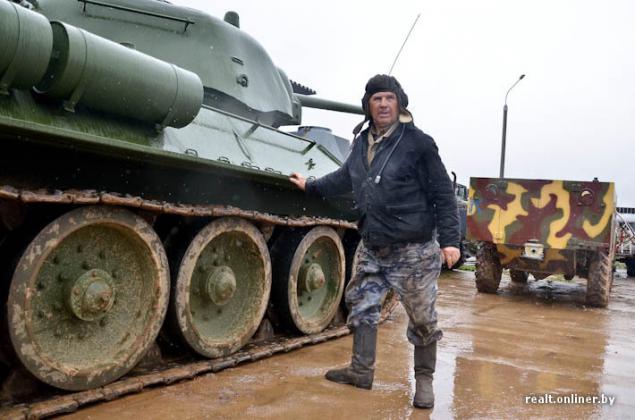
47
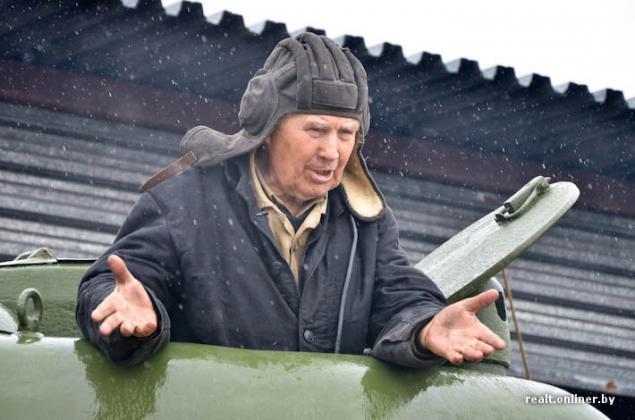
48
"This is the best tank - he says about" Thirty. " - Easy traveled, fleet. The Germans were afraid of him briskly. Our soldiers, to bring more horror Fritz, took leaky bucket and secured it to the end of the barrel, as a result of distant cannon fire seemed even larger than it actually is. The Germans fled without looking back. But in general life tanker it was short-lived. In each fight go like the last. Sideways machine twisted - and everything. "
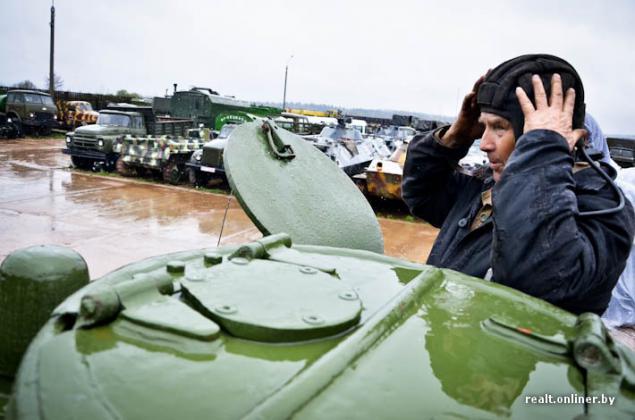
49
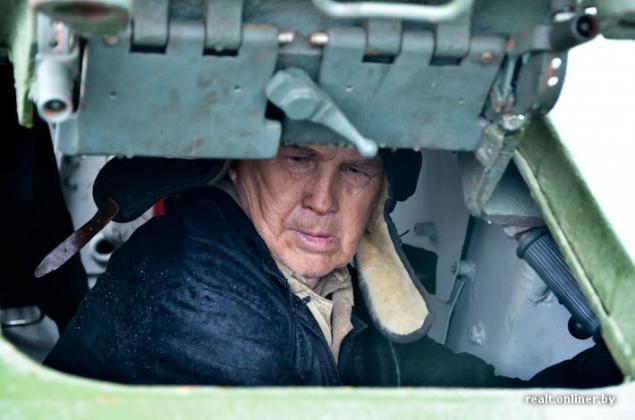
50

51
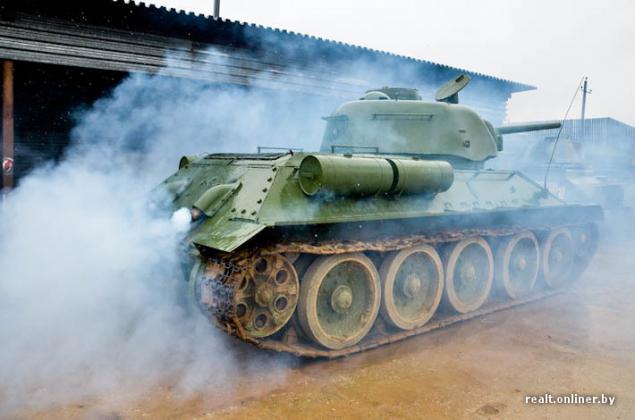
52
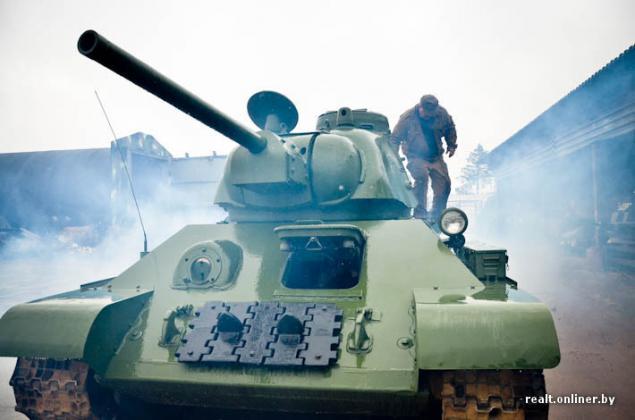
53
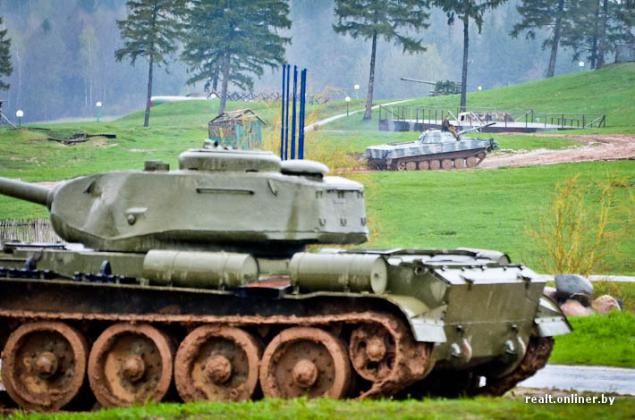
54
Maimed, bogged down in the marshes and drowned in rivers and lakes are the tanks across Belarus so far.
- That this car was in the river, in a district of the Mogilev region - says the deputy director of the charitable foundation "Afghan Memory" Alexander Golubovic, pointing to standing under a canopy German Sturmgeschütz III. - Apparently, during the battle explosion dumped her from the bridge, and the Germans were unable to evacuate, and lying. After the war, the locals took off her engine, he worked as a mini-farm in the village, was shot by military weapons specialists, and pull the machine itself did not. We brought her here two years ago, began to recover in the accuracy of the drawings - and now do not know analogues of this unique instance of the former Soviet Union.
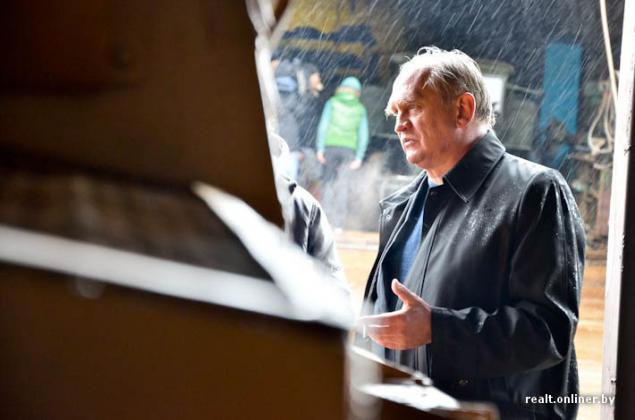
55
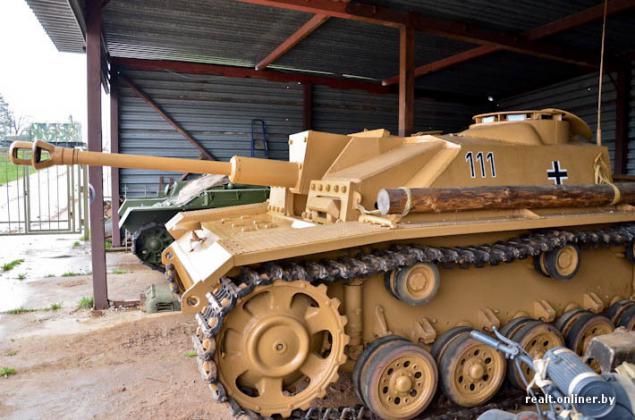
56
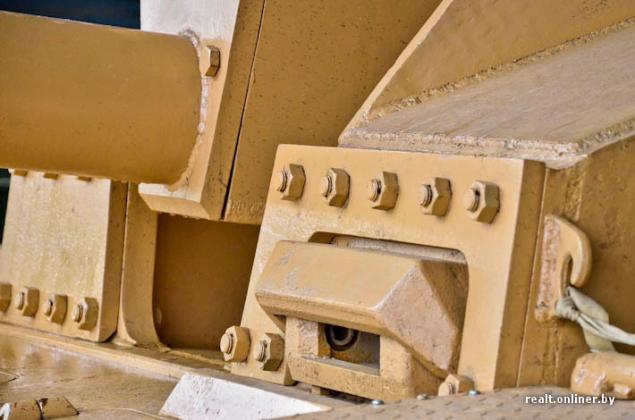
57
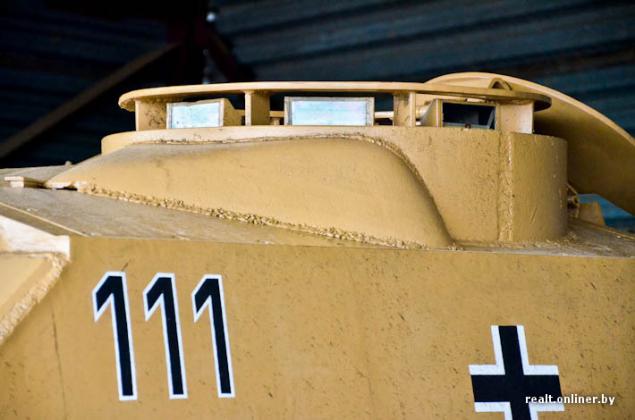
58
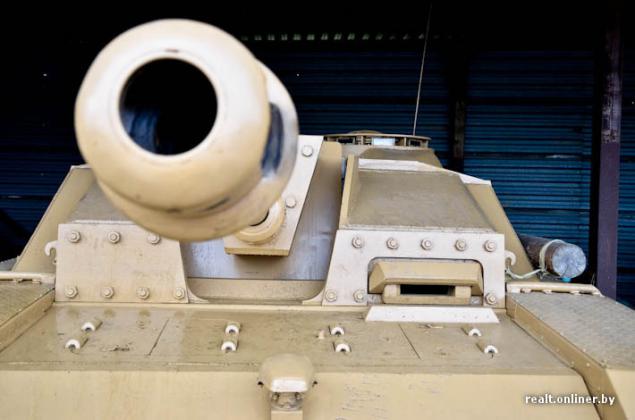
59
Nearby is a BT-7, he found Shklovsky search party. Tank completely looked over there, by the way, was a unique engine fighter. He is now involved in all the parades, it's absolutely authentic copy only the engine of the "stuffing" were replaced.
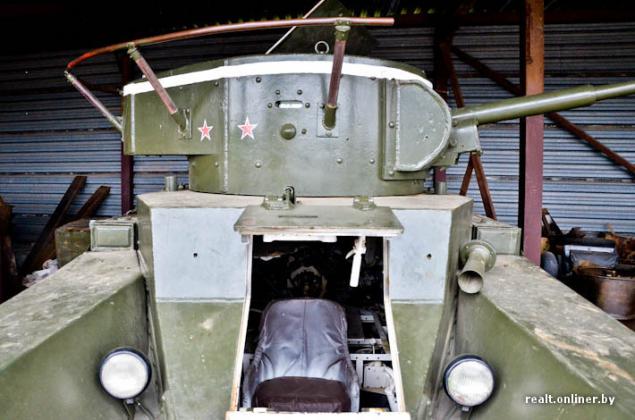
60
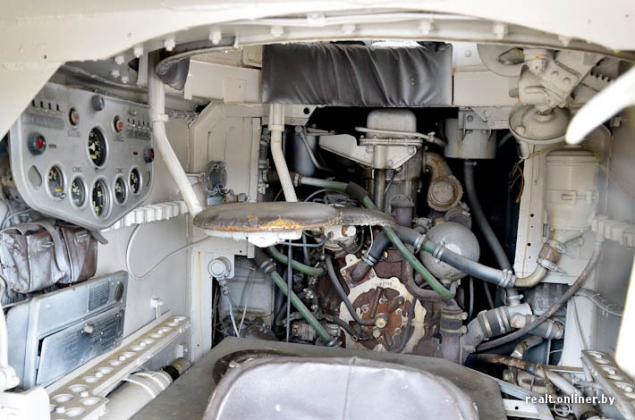
61

62
- And this car was involved in the fighting?
- Yes, this tank was still in the fighting on Khalkhin Gol against the Japanese in 1939, then he was transferred here, in Belarus, he participated in the largest tank battle of Senno, where he drowned.
- What is the price of such a tank right now?
- I think we are talking about millions of dollars, ranging from five to six. They say, for example, that our BT-7 Schwarzenegger wanted to buy, because at the time in Austria, he served as a tanker. But who would sell it to him? Even the Cuban women, the largest museum of military equipment Russia, with its rich collection, this is not. BT-5 is, and 7th there.

63
We do a good job. Here, for example, a story. We've got a large collection of modern military and engineering equipment. And a couple of years ago, I see: there are three men, and when one says: "u have ... My own radar. Well I served on it. " And he reached it, the door trying to open it. But this modern technology can be a little interested, but he saw it, and it is nice. And the people who came with him, - it is also nice. So we want to collect as many copies of the equipment and keep it. After military equipment - is also part of the history and culture of the people.

64
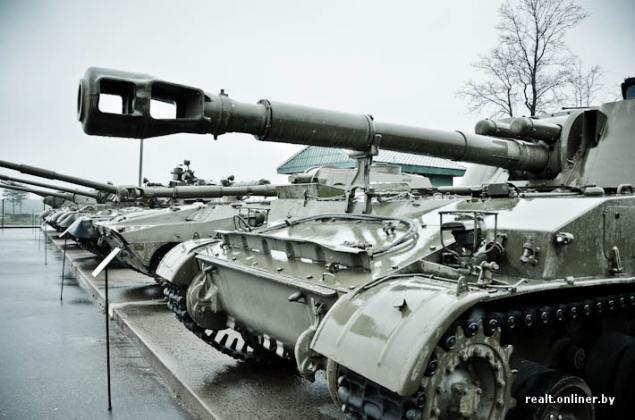
65
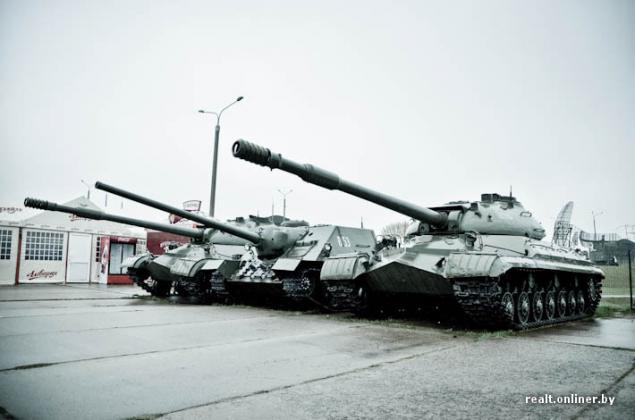
66
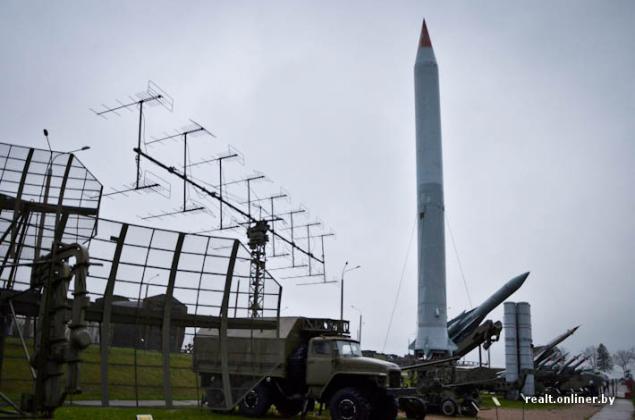
67
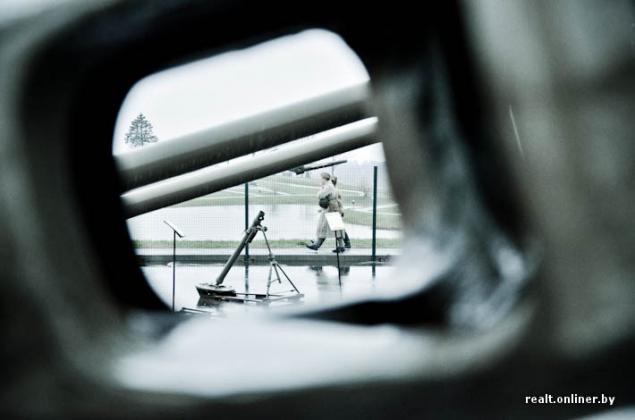
68
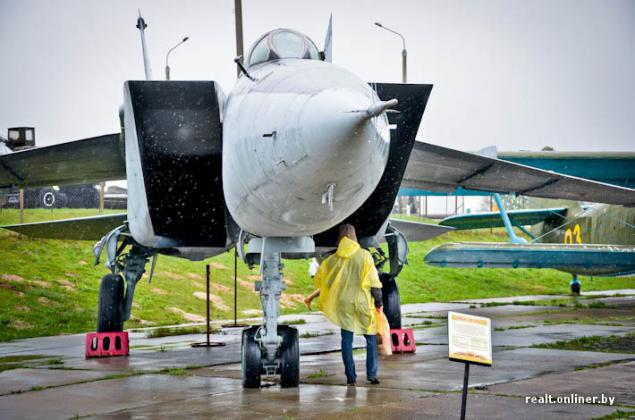
69
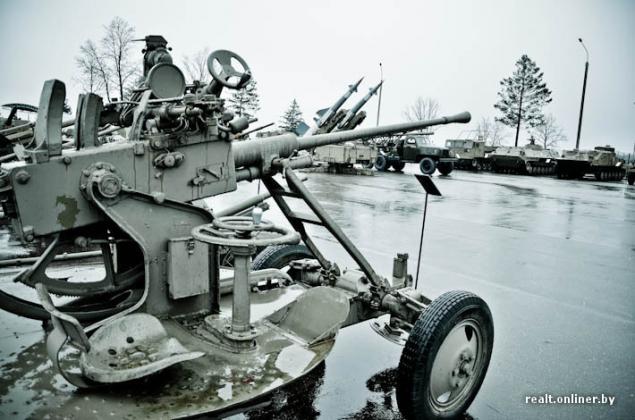
70
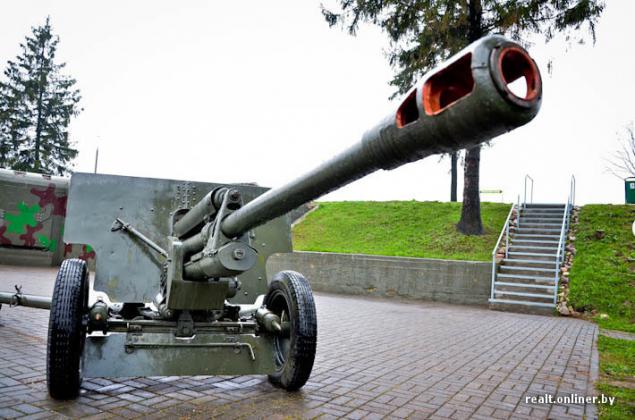
71
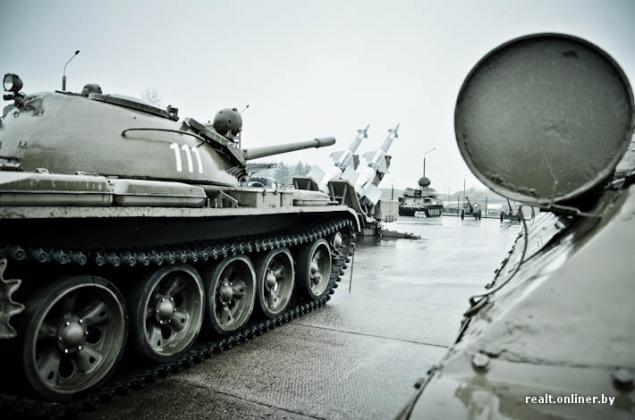
72
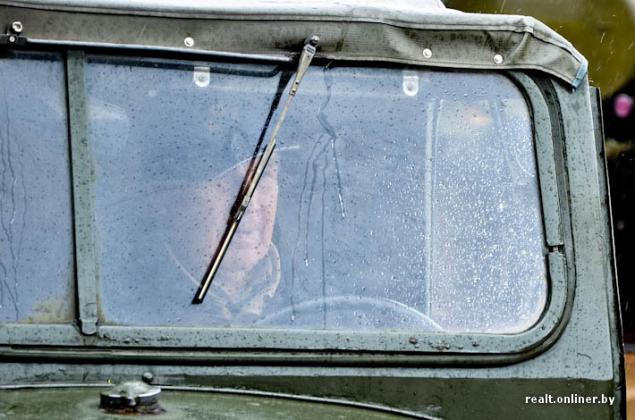
73
Taken from here
Source: Mr Korsak, darriuss. Photo: Alex Matyushkov video - Alexei Nosov
Not everything, add some photos from the official site

Guerrilla village.
A farm.

75
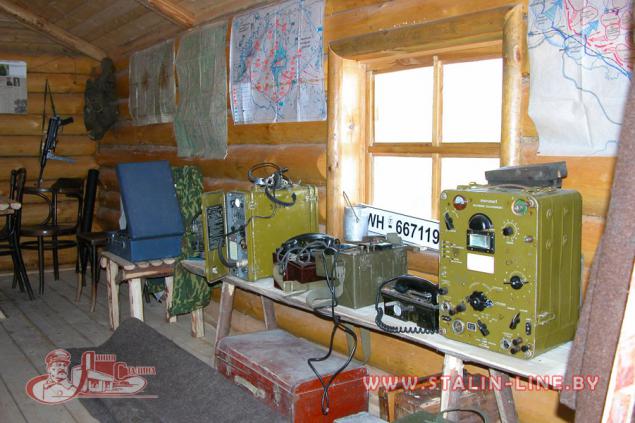
76
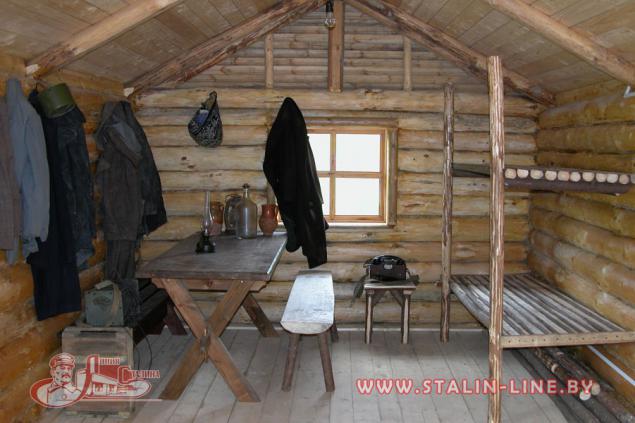
77
Source:
Historical and Cultural Complex "Stalin Line" - a unique tourist site not only for Belarus. In recent years, here comes more and more tourists and military history enthusiasts from near and far abroad. Visitors are shown the formidable fortifications, allow first hand experience what it's like to shoot from the "Kalashnikov", or ATR. But the main "trick" "Stalin Line" - the tanks. Unlike most other museums, here they are "live" - roaring engines, sneezing soot and knead dirt off-road steel tracks. Just seeing them in motion, feeling the earth trembles, when the multi-ton machine of creeping around, looking into the muzzle of a black hole, you know all the indomitable power, which had to live alongside our grandfathers and great-grandfathers during the long four years of the Great Patriotic. Journalists Onliner.by to the anniversary of victory in World War II talked to the creators of a unique museum, visited in the famous "Thirty", a ride on the T-44, found out what makes each year come here Japanese tourists and why Schwarzenegger did not sell a unique tank BT-7 .

2

3

4

5

6

7
Tourists
At the end of the 1920s on the western border of the Soviet Union began the construction of fortifications, with a light hand journalists received the informal name of the line of Stalin. After 70 years, a group of enthusiasts from the charitable foundation "Afghan Memory" with the support of the state, organized on the basis of a small fragment of the fortification historical and cultural complex, which has no analogues in the former USSR.

8

9

10

11

12
Despite the cloudy weather and almost continuous rain, cars and buses with tourists on the "Stalin Line" pull up regularly. Most of the cars in the parking lot - with the Russian numbers: guests from the neighboring countries are trying to use to spend a two-week vacation.
"Everything I like you: people, prices and service - says buys soldier's porridge at a local cafe Muscovite. - Ours is very much come to the majority of people are interested, enthusiastic. Those who do not need anything, just sit at home and drink. "

13

14
Drink often and coming. Another dealer told us the story of Belarusian tourists, who arrived on a tourist bus. "Connoisseur of history" on the road to the "Stalin Line" drunk to unconsciousness, half asleep in his chair, and when the group was leaving, tearfully asked friends to bring him to the nearest tank and take a picture of his background. He said: "My wife does not believe that the tour went on, required evidence!»
Fortunately, such incidents are rare. People who come here are really interested in all that they can show to the historical and cultural complex. Even school children - a headache all the guides - behave in concrete bags caponiers quieter water below the grass and just look in the mouth lecturer. The atmosphere is.

15

16
Fortified
Defensive installations included today in the KIC "Stalin Line", were part of the so-called Miura - Minsk fortified area. All in all the "old" (before 1939), the western border of the Soviet Union since the end of 1920 until the end of 1930 was built 21 fortified area - they covered a great distance from Karelia to Odessa.

17

18

19
- The complex restored and serve as the basic elements of the fortification artillery polukaponir exposure and two machine-gun bunker - says an employee of historical and cultural complex, Sergei Zakharov. - Artillery, or as it is called, gun polukaponir №134, near where we are now, was erected near the modern highway Minsk - Molodechno in 1932. His arms - two 76-millimeter guns. The garrison consisted of the construction of 20 people. Two such caponier crossfire could cover 6-kilometer fortified line of defense.

20

21
- And they say that in itself the line of Stalin any role in the defense of the country did not play, do not understand why it was built - "authoritatively" said one of the tourists.
- This is a traditional misconception - upsets the "know-all" Sergey Zakharov. - Let's start with the fact that Stalin Line was not originally designed to completely stop the enemy advance. Her task was to inflict maximum casualties, the rear cover, to allow to mobilize our army and focus on the threatened area. All have 15 days.
On the other hand, the first fortified areas, we begin to build in 1927, very difficult politically. At this point, we have considered the main enemies of Britain and France, that is the Entente, another intervention which we are constantly frightened. Considered a threat to those countries from bridgeheads in the Baltic States, but more likely the enemy we acted Poland. 1927 - Military coup in Poland, came to power Pilsudski, leaves no hope to restore Rzeczpospolita within the borders of 1772. And just at this moment it begins the accelerated construction of fortified areas.

22

23

24
Minsk fortified area, which is part of the line of Stalin, was built in 1932-1933. While the creation of the fortified line of this magnitude hungry undressed country was an enormous feat.
As for the fact that the line of Stalin delayed the Germans, because it is against them never built. It was built against Poland. For example, this one had polukaponir maximum resistance against projectile caliber 203 mm or 152-mm cannon. In Poland until 1938 in service just was not of the caliber of artillery, and so for her, these fortifications were almost invulnerable.

25

26

27
Caponier
Sergey Zakharov leads us through the rooms of a concrete bunker. Today it regained almost everything. And virtually all the elements of the fortification - the "native".

28
- You have to understand that at a time when caponier perform combat missions, space was significantly less here - he says. - Almost everything here was forced by the shelves, boxes of ammunition. The air pressure inside the silo was higher than outside - it allowed the garrison to protect against chemical attack. Also, the pressure "pushes" out the powder gases, or in a few bursts of combat payment instruments would have suffocated.
It was assumed that, unless interrupted by the delivery of ammunition, caponier had to hold at least 15 days. In complete isolation he would have held out for long - would quickly run out of ammunition. Firing guns - 10-12 rounds per minute, 300 rounds of ammunition from enough for a few hours.

29

30
Japanese Red Army
Guests from neighboring countries to the "Stalin Line" really excited. They attentive listeners, and clients pay. About the stand, where you can shoot from oholoschennogo weapons, another Russian tourist gatherings buys tickets totaling more than $ 50.
"Shoot shoot well, my son," - he says offspring and pats him on the head. Son readily picks up the PTR and the soul gives a volley of perceived opponents.

31

32

33
In nearby kiosk selling souvenirs. The lead product - plaster busts of the leader of the peoples, whose name is a historical and cultural complex. By the way, officially in honor of Stalin, this line of fortifications never called. This "invention" of journalists and German propaganda even the end of the 1930s, which, nevertheless, firmly established in the public mind. Now, on the "Lines" is a bust of the leader of the peoples (one of the few open to the former Soviet Union after the collapse of the Union), his use of the logo and souvenir production.

34
Come to the "Stalin Line" and tourists from very very far abroad: Korea and Japan. On this day, the complex is just happy plunged into the life of the Workers 'and Peasants' Red Army, a group of Japanese. They were dressed in Soviet form, after which they began to develop the skills of combat training at the shooting range.
Under the harsh orders of uniformed commander instructor historical and cultural complex Japanese "Red Army" jump on the armor of the T-44 flies with her loose, covering the car and on the spot razyat rifles Mosina imaginary opponent.

35

36

37

38

39
Head of the delegation - the businessman from Tokyo Ivahaschi Kabuharu for several years engaged in the export of Russian and Belarusian goods - has long been interested in the history of the Soviet military and tries to promote it at home. He has already made several trips to the "Stalin Line", to the other end of the world, finding unique complex of Belarus closer. At this time, I brought several of his friends to participate in the reconstruction of the historic battles on Khalkhin-in 1939.

40

41
Tanks
As already mentioned, the tanks - the main "trick" "Stalin Line". The exhibition of historical and cultural complex of dozens of different from "oldies" from the Second World War to modern weapons. Most is static, but we are interested in "real" machines that "Stalin Line" in recent years, is famous far beyond the country.
On the outskirts of the complex stands out mehdvor "Stalin Line" or, as it is called here, park.

42

43

44

45
It suits us strong grandfather, wiping rags stained with fuel oil and represented his hands: Mikhail.

46
At 83, the old tanker Mikhail Onoshko with surprising ease in the high jumps aboard a T-34. Famously pulled headset, dives into the commander's hatch, habitual movement triggers the starter. The machine, like a horse, felt a hand host alive. Mikhail remembers wartime: while still a teenager, he saw marinated powder and fuel oil military mechanics repaired his "wards". Perhaps, from this time and was born a passion for combat vehicles. For more than half a century, he is nursed with tanks. He goes in them as well as teaching, consulting engineers, if they find it difficult to "diagnosis" and "treatment method." Witness the tanks as a strict father of small children, - dry, with pride.

47

48
"This is the best tank - he says about" Thirty. " - Easy traveled, fleet. The Germans were afraid of him briskly. Our soldiers, to bring more horror Fritz, took leaky bucket and secured it to the end of the barrel, as a result of distant cannon fire seemed even larger than it actually is. The Germans fled without looking back. But in general life tanker it was short-lived. In each fight go like the last. Sideways machine twisted - and everything. "

49

50

51

52

53

54
Maimed, bogged down in the marshes and drowned in rivers and lakes are the tanks across Belarus so far.
- That this car was in the river, in a district of the Mogilev region - says the deputy director of the charitable foundation "Afghan Memory" Alexander Golubovic, pointing to standing under a canopy German Sturmgeschütz III. - Apparently, during the battle explosion dumped her from the bridge, and the Germans were unable to evacuate, and lying. After the war, the locals took off her engine, he worked as a mini-farm in the village, was shot by military weapons specialists, and pull the machine itself did not. We brought her here two years ago, began to recover in the accuracy of the drawings - and now do not know analogues of this unique instance of the former Soviet Union.

55

56

57

58

59
Nearby is a BT-7, he found Shklovsky search party. Tank completely looked over there, by the way, was a unique engine fighter. He is now involved in all the parades, it's absolutely authentic copy only the engine of the "stuffing" were replaced.

60

61

62
- And this car was involved in the fighting?
- Yes, this tank was still in the fighting on Khalkhin Gol against the Japanese in 1939, then he was transferred here, in Belarus, he participated in the largest tank battle of Senno, where he drowned.
- What is the price of such a tank right now?
- I think we are talking about millions of dollars, ranging from five to six. They say, for example, that our BT-7 Schwarzenegger wanted to buy, because at the time in Austria, he served as a tanker. But who would sell it to him? Even the Cuban women, the largest museum of military equipment Russia, with its rich collection, this is not. BT-5 is, and 7th there.

63
We do a good job. Here, for example, a story. We've got a large collection of modern military and engineering equipment. And a couple of years ago, I see: there are three men, and when one says: "u have ... My own radar. Well I served on it. " And he reached it, the door trying to open it. But this modern technology can be a little interested, but he saw it, and it is nice. And the people who came with him, - it is also nice. So we want to collect as many copies of the equipment and keep it. After military equipment - is also part of the history and culture of the people.

64

65

66

67

68

69

70

71

72

73
Taken from here
Source: Mr Korsak, darriuss. Photo: Alex Matyushkov video - Alexei Nosov
Not everything, add some photos from the official site

Guerrilla village.
A farm.

75

76

77
Source:

